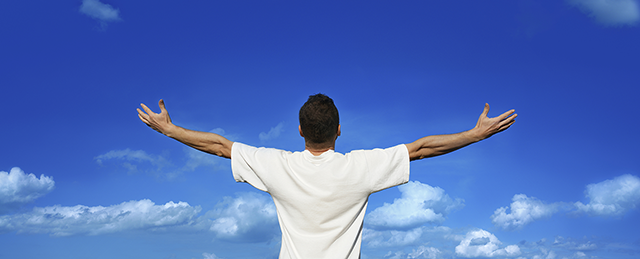
It is a method of personal development.
It is training for an efficient and healthy use of oneself.
It prevents or relieves problems produced by inappropriate muscular tension and poor posture, i.e. back pain, breathing difficulties, insecurity, anxiety and stress.
It takes into account the connection of all the parts of the body and analyses the excesses or faults of muscular tension.
It intends the minimum effort in the practice of any activity, the free functioning of the joints and the optimization of sensory perception.
It considers body and mind to be a unit. Physical and mental disposition affect each other.
It can improve performance in physical activities as well as coordination, attention, balance and sex life.
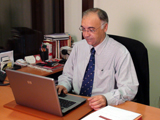
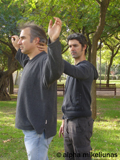
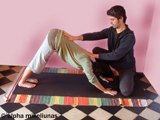
Those who want to be more efficient at work.
Those with physical troubles as a consequence of harmful postural habits.
Those suffering from back pain or vocal problems.
Musicians, singers, actors, dancers and other performers, who can learn how to improve stamina, increase clarity of perception, free up spontaneity and manage stage fright.
Sports people, who can improve flexibility, timing and efficiency, to be on form more consistently and find ways to overcome limitations with ease.
Those wanting to look better.
Anyone wishing to feel freer in their body and get the most out of their life.
Companies wanting to minimize sick leave due to musculoskeletal disorders.
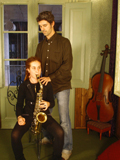
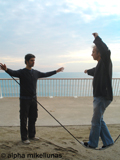
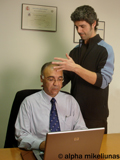
Famous people who have studied the Alexander Technique:
Writers Aldous Huxley, Robertson Davies and Roald Dahl, playwright George Bernard Shaw, actors Judi Dench, Hilary Swank, Sir Ben Kingsley, Michael Caine, Jeremy Irons, Suzanna Hamilton, John Cleese, Kevin Kline, William Hurt, Jamie Lee Curtis, Paul Newman, Mary Steenburgen, Robin Williams and Patti Lupone, musicians Paul McCartney, Madonna, Yehudi Menuhin and Sting, and Nobel Prize winner for medicine and physiology Nikolaas Tinbergen. (Source: Wikipedia)
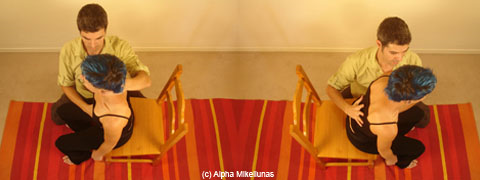
One-to-one lessons:
Your teacher will use gentle hands-on guidance and verbal explanations to help you find ease and balance within yourself in simple movements and everyday activities – such as sitting, standing, walking or bending. Through experience and observation, you gain increased awareness enabling you to change long-standing habits and to function more efficiently.
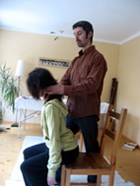
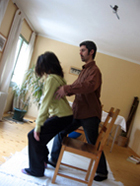
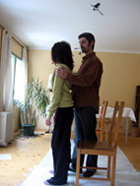
In time, you will be able to use your new understanding and skill in more complex and demanding activities. You can bring awareness and poise to anything you do. The number of lessons you take can be discussed with your teacher and depends on your particular needs and goals. The Society of Teachers of the Alexander Technique (STAT) recommends to take at least 20 to 30 lessons in order to achieve some control over the use of your body. Lessons are 30 to 45 minutes long.
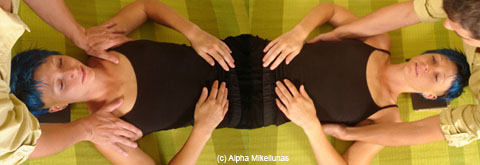
Group lessons:
These lessons are introductory. You start learning the principles upon which the Technique is based and evaluating your sensory awareness and your habits. The pupils are encouraged to develop constructive attitudes towards the use they make of themselves. Further progress requires one-to-one work.
Note: Our senses are used to our habits in a way that we could perceive the harmful as comfortable or right. That is why it is almost impossible to change those habits without a teacher who points out what are we really doing with ourselves. For the same reason, there are no valid "exercises" to practice on your own until the sensory system has been re-educated.
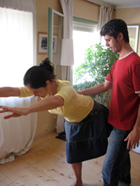
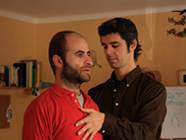
I initially turned to the Alexander technique for lower back problems that prevented me from working out, sitting down, or doing much of anything. Not only has the technique helped tremendously with these pains and aches, but during my lessons with Eduardo I discovered a wide range of subconscious habits that interfered with everything from my breathing to the way I work. With the help of Eduardo I have been able to identify these habits and to overcome them. Eduardo is a gifted teacher, and his patience and kindness make him very pleasant to work with. (Peter van de Ven, researcher)
Lo mejor que he sacado de las clases de TA es que lograron que dejara de sufrir tensión muscular en la zona de hombros y cuello, porque me han hecho mucho más consciente de cuando empiezo a provocarla y me han enseñado cómo evitarla. (Patricia Gosalbez, comunicación)
Per a mi, la classe amb l'Eduard es converteix en un moment on connecto amb la meva presència i tinc una comunicació amb el meu cos, és una meditació en moviment, un descobrir com està el cos.... aquesta técnica és genial i la sento necessària per la meva salut física i emocional. (Adolf, terapeuta)
Entré en contacto con la Técnica Alexander porque sufría un dolor de cuello y hombro izquierdo, y apenas podía girar la cabeza para ese lado, resistente a los tratamientos habituales analgésicos, fisio, etc. El profesor me enseñó a relajar la tensión del cuello que interfería en la posición natural de cuello y cabeza en relación con el torso y que se retroalimentaba: dolor-tensión-más dolor-más tensión... Una vez solucionado este problema, sigo recibiendo clases de Técnica Alexander con la pretensión de detectar las tensiones que por diversas causas impongo inconscientemente a mis estructuras corporales y de recuperar el movimiento ligero, fácil y gracioso que creo que recibimos al nacer. (Pilar)
A les classes de tècnica Alexander amb l'Eduard he agafat consciència de que de vegades és tan important el que fem com el que deixem de fer. De la seva ma he aprés a tensionar menys i a escoltar més el que em diu el cos. A cada sessió vaig reaprenent a utilitzar millor el cos, al mateix temps que els mals d'esquena desapareixen del meu dia a dia. (Alícia Verdú, enginyera)
Desde que tuve conocimiento de esta técnica he estado con varios profesores y, para mí, Eduardo destaca por su profesionalidad, disposición y trato y, sobre todo, por los resultados, que hacen que te sientas en las mejores manos. (Miner, actor)
Muy interesante la Técnica Alexander para mejorar la postura y tomar conciencia de tu cuerpo. (Luca)
Frederick Matthias Alexander was born in Tasmania in 1869. In his twenties he moved to Sydney and became a professional reciter of dramatic pieces. After almost completely losing his voice he pioneered a method of improving the use of his body. This method not only cured his voice but proved to have a much broader application. He set out to teach in Australia and then moved to London and there he established a school and published several books.
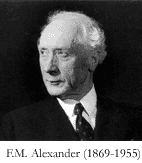
These are some of his remarks:
You translate everything, whether physical, mental or spiritual, into muscular tension.
You can't do something you don't know if you keep on doing what you do know.
Everyone wants to be right, but no one stops to consider if their idea of right is right.
The things that don't exist are the most difficult to get rid of.
Don't come to me unless, when I tell you you are wrong, you make up your mind to smile and be pleased.